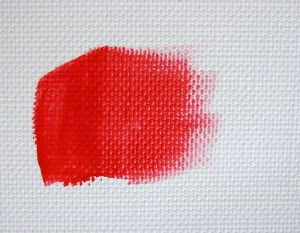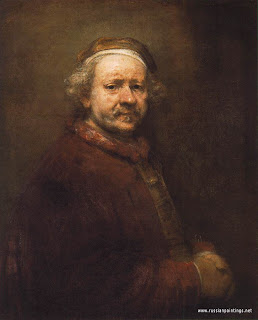 The process starts with drawing the image on the stone by using a greasy black lithographic pencil. These usually take three to twelve days, depending on the size and complexity of the image. The main problem is that mistakes cannot be erased. Small corrections can be made with a sharp knife, but major corrections are needed, it is necessary to start again on a new stone. This is important to keep in mind when recreating the process digitally.
The process starts with drawing the image on the stone by using a greasy black lithographic pencil. These usually take three to twelve days, depending on the size and complexity of the image. The main problem is that mistakes cannot be erased. Small corrections can be made with a sharp knife, but major corrections are needed, it is necessary to start again on a new stone. This is important to keep in mind when recreating the process digitally.The technique of lithography (from the Greek for "stone drawing") relies on "the principle of the antipathy of grease and water." Generally, the stone on which the image is initially created is limestone. The image is drawn on the stone with some greasy material. After the image is drawn, the stone is dampened and ink is applied with a roller. The greasy image repels the water and holds the oily ink while the rest of the stone's surface does the opposite. The stone is chemically treated after the image is created in order to enhance this effect. Some materials for drawing the image are litho crayons and pencils (containing wax, pigment, soap and shellac), liquid tusche (similar in composition to the crayons but water soluble), stick tusche (a solid form), conte crayons, pens and graphite pencils to name a few.
The finished stone is placed on a bed that carries it through the press. The paper is placed on top of the stone with some backing papers to protect it. A sheet of metal or plastic is placed on top of all the materials and they are braced together. A roller underneath that is turned by a handle moves the bed. This is similar to the intaglio press except that a scraper bar instead of a roller applies the pressure from above. The scraper bar slides along the greased metal plate pressing the paper against the stone so that it lifts the ink from where the greasy drawing material holds it on the stone.
 Color lithography is a more complex process that usually involves multiple pressings, one for each color in the image. This requires an extensive knowledge of color theory because the process requires the mixing of colors on the final image itself. According to one book on lithography technique, "The original color drawing should be treated as a guide for the final print, not as a finished work to be duplicated exactly." Different stones are sometimes used for each color but the same stone can be used for multiple colors.
Color lithography is a more complex process that usually involves multiple pressings, one for each color in the image. This requires an extensive knowledge of color theory because the process requires the mixing of colors on the final image itself. According to one book on lithography technique, "The original color drawing should be treated as a guide for the final print, not as a finished work to be duplicated exactly." Different stones are sometimes used for each color but the same stone can be used for multiple colors.
The finished stone is placed on a bed that carries it through the press. The paper is placed on top of the stone with some backing papers to protect it. A sheet of metal or plastic is placed on top of all the materials and they are braced together. A roller underneath that is turned by a handle moves the bed. This is similar to the intaglio press except that a scraper bar instead of a roller applies the pressure from above. The scraper bar slides along the greased metal plate pressing the paper against the stone so that it lifts the ink from where the greasy drawing material holds it on the stone.
 Color lithography is a more complex process that usually involves multiple pressings, one for each color in the image. This requires an extensive knowledge of color theory because the process requires the mixing of colors on the final image itself. According to one book on lithography technique, "The original color drawing should be treated as a guide for the final print, not as a finished work to be duplicated exactly." Different stones are sometimes used for each color but the same stone can be used for multiple colors.
Color lithography is a more complex process that usually involves multiple pressings, one for each color in the image. This requires an extensive knowledge of color theory because the process requires the mixing of colors on the final image itself. According to one book on lithography technique, "The original color drawing should be treated as a guide for the final print, not as a finished work to be duplicated exactly." Different stones are sometimes used for each color but the same stone can be used for multiple colors.Marks are greasy or oily when drawing on the stone, and the use of the threshold effect and layer masks are normally used when making digital lithographs.
Charles Marion Russell (http://www.art.com/gallery/id--a427/charles-marion-russell-posters.htm) used lithography to make images of the West.
Bernard Buffet (http://www.artexpertswebsite.com/pages/artists/buffet.php) used lithography for portraits and animal sketches.
Vito Acconci (http://en.wikipedia.org/wiki/File:%27City_of_Words%27,_lithograph_by_Vito_Acconci,_1999.jpg) used text as a means to make lithography.





